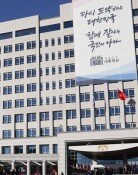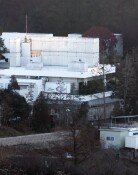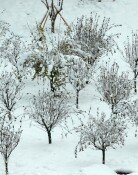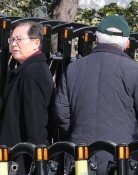All the Good Stuff about Seoul
600 year-old capital, miracle of River Han, metropolis with 10 million residents, city of the 1988 Olympics… Seoul is to add another title, `city of World Cup`. Beginning on the 31st with the opening match, Turkey-China match and the semifinals are to be held on the 13th and 25th next month, respectively.
Each nation’s soccer team and a great number of tourists are flowing into Seoul. Foreigners and citizens in Seoul have introduced some of `Seoul’s prides` that are not to be missed while staying in the city.
▽See – City Tour World Cup course (Yoon Tae-Won. 24. Member of Korean Supporters).
In order to get a good glance at mega-city Seoul, a good way is to use City Tour Bus. A new World Cup course was formed in March, which will give tourists a big picture of the city.
The 32.9 kilometer-course goes through 18 famous sites, starting from Kwanghwa-mun through Deoksugung, Shinchon, World Cup Stadium, Assembly Hall, Yeoido wharf, Yongsan electronics-town, Seoul Station, Namdaemun, and Sejong Center for the Performing Arts. Buses depart everyday between 9 a.m. and 7 p.m. in every 30 minutes. It is possible to stop at one place for more sightseeing and catch the next bus. Every seat is equipped with voice system in Korean, English, Japanese, Chinese, and French, which provides in-depth explanation about each site. 02-777-6090
▽Eat – Traditional Chinese Food (Wang Shaoling. 25. Chinese student).
Place of traditional Chinese delicacy in Seoul. It is so-called `Little Chinatown`, located in Yeonhee-dong, Seoul, where over 2,000 overseas Chinese are living.
Restaurants here are full of Chinese atmosphere, decorated with scarlet wallpapers, pictures of dragons with golden beads, and colorful ceramics. Chefs are also, in many cases, real Chinese. Some names include Jinbukyung, Gullibu, Jinbo, Maehwa, Heungbok, Yookyang, and Sandongkyoja.
Jinbukyung, particularly, is where `Chinese Mainstream Food Expo` is to be held along with Harimgak, located in Buam-dong, Jongro-gu. 8 top-class chefs from China are to put out 40 different kinds of mainland food for 5,000 – 10,000 won per dish. A big screen has been prepared in the 200-seat hall on the fourth floor for enjoyment of food and soccer matches at the same time. 02-3141-8688
▽Enjoy – Experiencing Korean houses (Michaela. 24. Czech).
There is a sense of `history and culture` at Korean-house villages. Chosun dynasty’s noblemen either lived in the northern town or southern town, separated by Jongro and Cheonggyechoen. The northern part was occupied by royal family members and high officials, and the southern part by relatively poor noblemen.
The northern village, located in-between Kyeongbokgung and Biwon, still has over 900 traditions residents. Also, there are over 15 vacant traditional houses of famous craftsmen like Cho Il-Sun of traditional dying, Shin Jung-Hyun of wooden bowls, Hwang Hye-Sung and Han Bok-Rye of court food. Simple souvenirs are sold and tours can be organized under group reservation. 02-3707-8388
Pil-dong’s Mt. Nam Korean-house village is organized by the city of Seoul as a tourism resource. Foundation for the Preservation of Cultural Properties, Korea, is running the place. In June, every form of `Gut` (traditional exorcism ceremony) of the country’s provinces is to be performed for free of charge. 02-2266-6937,8
▽Buy – Hwanghak-dong Second-Hand Market (John. 32. Turkey. Ajou University student).
There are many tourists, who look for back-street second-hand markets rather than decent shopping malls or duty free stores. Out of many second-hand markets, where everything from fashion goods to electronics can be found, Hwanghak-dong market in Seoul’s Cheongye is the most famous.
In the 1980s, the market had over 200 antiquity shops being the best antiquity market throughout the country. Although there are only about 15 shops left now, it is not difficult to find rare antiques. They can be used either directly or as interior decorative items. Nowadays, electronics shops, which sell second-hand TVs, air conditioners, and refrigerators, and video stores are popular. Collectors of rare records or books constantly visit the place also.
Kyung-Joon Chung news91@donga.com







